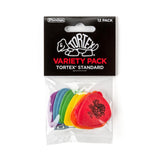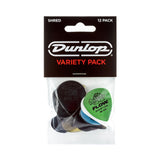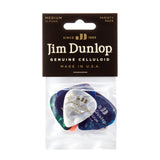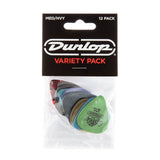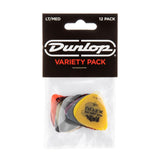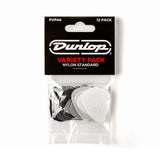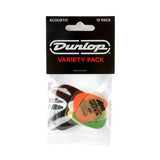Your guitar output jack is the terminus for all your guitar wiring, where the labour of your creativity all comes together. All of your pickups, pots, switches, and capacitors end up at the output jack and thus it’s a crucial part of any guitarist's learning to understand how it works, and how to wire an output jack. In Part 5 of our Guitar Wiring Guide, we’re going to show you how guitar output jack wiring works, and how you can do this simple bit of guitar maintenance for yourself.
What is an Output Jack?
Before we get into how an output jack works, we need to look at your guitar cable. A guitar cable sends your signal to an amp, with part of it going to the ground. As per the diagram below, there are two main parts of a mono guitar cable.
The tip is your ‘hot’ signal, i.e. the actual sound. The ’sleeve’ is the ground, where all the unwanted noise from your guitar goes. It’s important to understand the difference here as wiring up your output jack the wrong way around will result in a noisy guitar sound with bags of hum, and no one wants that!
How does an Output Jack work?
The output jack is a metal tube, through which your guitar cable is inserted. There are three connections, your ‘tip’, ‘sleeve’, and ‘tip arm’, as in the diagram below. When you plug your cable in you’ll feel it ‘click’ into place. That’s the ‘tip’ of the guitar cable connecting with the ’tip arm’. The ‘sleeve’ of your guitar cable makes contact with the ’sleeve’ of your output jack to act as your ground.
The ‘tip’ and ’sleeve’ connections are the points at which we’ll be soldering our guitar cables to. If you turn the output jack on its side, you’ll notice that the ‘tip’ and ‘sleeve’ connections are separated from each other by the cream-coloured layers of Phenolic.
How to wire an Output Jack
Installing a mono jack is one of the most basic bits of guitar maintenance, but it's also something that the vast majority of guitar players will encounter during their playing careers. Thankfully it’s a relatively easy job even for someone new to soldering, but there are a couple of things we’ll mention before we go into the actual mechanics of it.
Tinning
Tinning is the process where you cover the tip of your soldering iron with a layer of solder. Tinning not only extends the life of your tip by preventing oxidation and corrosion, but it also causes the solder to melt and flow more easily, resulting in a smoother soldering process. You’ll want to regularly tin your tips before working, whenever the soldering iron is idle for a while, and after use when you’re packing everything away. This will keep your soldering iron in top condition, and make the tips last longer.
To tin your tips you'll need to heat the iron up to operating temperature and wipe the tip on a damp soldering sponge to clean it. Once it’s clean let the iron return to operating temperature, then you can apply a small bead of solder to the copper part of the tip, wiping away any excess on the damp sponge. A small amount should remain on the tip, giving it a shiny appearance. Once you see this you're ready to rock!
Mechanical Connection
Making a mechanical connection will ensure your wire holds on for a better contact, preventing the need to re-solder again after use. To do this all you need to do is strip back the cloth or plastic cover of the wire, hook it through the hole in the terminal as in the picture below. With the wire holding on by itself, once you solder on top of it you’ll get a rock steady connection that's unlikely to break for some time.
Guitar Output Jack Wiring
To wire an output jack correctly, you’ll need to take your 'hot' wire (usually the white one) and connect it to your ‘Tip’ terminal. The ground wire (usually black) goes to the sleeve connection to provide your ground.

That’s it! Pretty simple no? The main issue with this, and many other kinds of wiring is ensuring a stable connection, but with a well tinned solder tip and a mechanical connection, you shouldn’t have any issues there!
In Conclusion
Wiring a guitar output jack is an essential bit of maintenance for any guitar tech, luthier, and any kind of guitar player. Easy enough to do yourself, you can save yourself a lot of time and money learning this invaluable skill.
Learn More
Find out how Capacitors can be best utilised in guitar circuits.
Using Resistors in Guitar Wiring can unlock powerful tone upgrades.
Another key part of guitar circuits, Guitar Potentiometers form a vital part of your electrics.
















